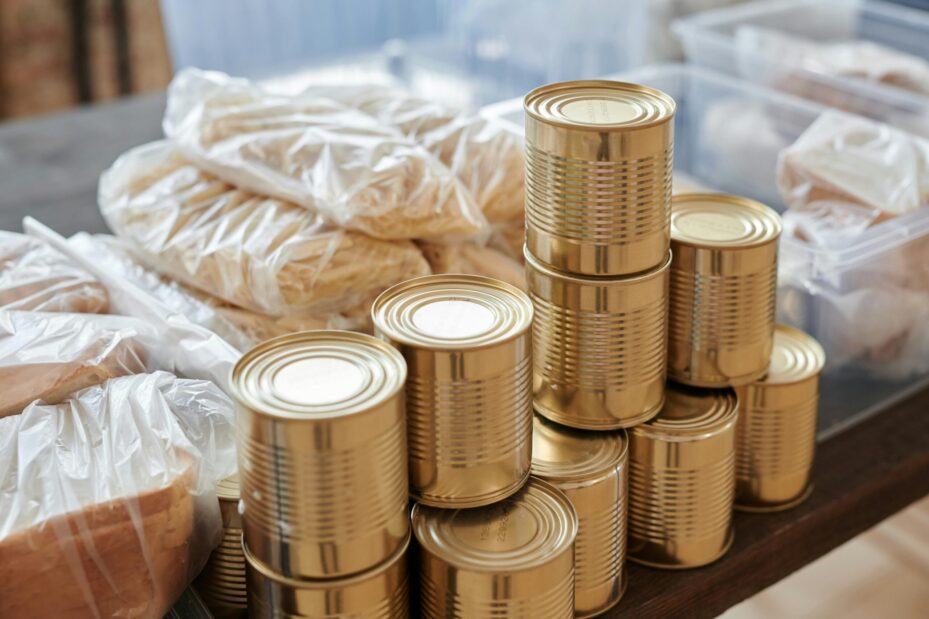We are going to shift our narrative here a bit to discuss food and when it goes bad. The most problematic thing for us in setting food goals was wasting food. Waste turned into cost. The cost was not only money but time lost in our goals. This post will cover the way difference between how food is labeled and when it goes bad. By the end of it, you will walk away with a different understanding of how food is treated in the US.
Why We ended up Wasting so Much
We needed to have a diverse menu stored at home to stop using restaurants. This created many challenges. We had always done some level of home cooking. It has changed over the years. It started with basics then became creating dishes from magazines like Bon Appétit, Cook’s Illustrated, or Food & Wine.
As we tried cooking different dishes, we realized that when the ingredients in recipes hit 4 or 5 ‘exotic’ ingredients we had a lot of wasted food. These ingredients may be everyday items to some people and cultures. What we found there was only so much fish sauce or garbanzo bean flour we could put to use day to day. This resulted in a routine purge of our cupboards, pantry, and fridge every 6 months. If it was past the use-by date, it went out through the disposal or garbage.
The Labels Don’t Mean It’s Bad
This was absolutely an incorrect use of that label. In our case, we were doubling our waste. We had a recreational property that we wanted to keep food in stock as well. If we didn’t cook ourselves we were relying on a couple of local restaurants and eating from the local gas station hot case. Based on our calorie budget, we wanted better options. We decided to do our research.
The USDA provides the following information:
- A “Best, if Used By/Before” date, indicates when a product will be of the best flavor or quality. It is not a purchase or safety date.
- A “Sell-By” date tells the store how long to display the product for sale for inventory management. It is not a safety date.
- A “Use-By” date is the last date recommended for the use of the product while at peak quality. It is not a safety date except for when used on infant formula as described below.
- A “Freeze-By” date indicates when a product should be frozen to maintain peak quality. It is not a purchase or safety date.
The USDA also makes two specific callouts around eggs and infant formula. These are nuanced regulations that don’t apply to the bulk of the foods we eat. In terms of baby formula, the Use-By date indicates that it still contains the nutrients it should. As an FYI, there are also non-federal requirements by some states on labeling eggs ‘Sell-By’ or ‘Expiration’. Neither are pertinent to the discussion of food waste in our bigger picture.
Misunderstanding Leads to Waste

Retail and consumer waste is a real issue in the US. The number is a staggering 30-40% between retail and consumer. The entire distribution chain from source to consumer contributes to the waste. The factors that contribute to the waste include everything from spoilage to culling of blemished items. Let’s spin this another way.
Let’s say we consumers waste 10% of our food. That means we are throwing away 10% of the money we have spent on it. At the time of writing this, the average consumer spend on groceries was above $250 a week which is over $13,000 a year. If we waste 10% of what we buy we are effectively throwing away $1,300 a year in groceries alone because the number doesn’t include eating out. The true cost of the waste is more than financial. The true cost includes environmental costs such as transportation, water, feed, and processing along with animals (if in your diet) are wasted. That is a huge issue for a population as large as the US.
We Went Old School
This learning led us to change our food habits. We learned to perform a visual and sniff test rather before we pitch it in the trash as recommended by the USDA. There are some things I don’t trust like milk but most foods will let you know they are on the downward slide. Commercially canned foods such as say, Baked Beans, may be fine well past their best-by date. Cuts of beef may be aged for up to 4 weeks which is a longer time than your typical use-by date.
For home-produced foods, such as canning or fermenting, it becomes more complicated. Some items will not put off any sign they are dangerous. That we will address in another post. We will also discuss how we learned to maximize storage and efficiently use it in another post as well.
Your Money, Your Safety Choice
The takeaway here is that the US does not regulate food through these labels. Labeling provides no real safety nets for our food. By making informed decisions, and using basic sensory information (Does it smell bad?) you can cut your waste which leads to decreased spending.
People want hard and fast safety rules but the USDA and others simply don’t provide them. If you are in an ‘at risk’ group such as very young or old, you may not feel like taking the chance. With what we have learned, we will take our chances by using our senses instead of dates.
